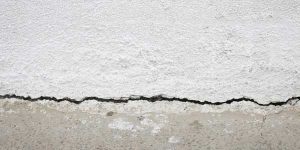in Portland OR and Vancouver WA areas

What is seismic retrofitting?
A seismic retrofit or seismic upgrade helps your building survive an earthquake. Without proper upgrading, and in the event of an earthquake, your home can literally be shaken from its foundation.
Portland OR and Vancouver WA are in a quake-prone area. So homeowners should consider seismic retrofitting and upgrading. All experts in the field agree that it is not if the next big earthquake is going to hit this area, but when. When this happens, considerable damage from an earthquake can be expected in our area.
A typical seismic retrofit helps secure your home to its foundation. It also ensures the foundation is strong enough to handle an earthquake and support the house above.
The purpose of proper seismic retrofitting:
- Save lives
- Reduce injuries
- Reduce earthquake property damage
- Reduce repair or replacement costs after an earthquake
What are the three types of retrofitting?
The three main types of seismic retrofitting address different vulnerabilities in your home’s structure:
- Foundation bolting secures your home’s sill plate to the foundation with anchor bolts. This keeps the house in place during lateral movement.
- Cripple wall bracing strengthens the short walls found between the foundation and first floor. This is typical in many older homes in the Pacific Northwest. It involves adding plywood sheathing and metal connectors for extra stability.
- Soft-story retrofitting addresses homes with large openings, like garage doors and big windows on the ground floor. It adds steel frames or shear walls to improve structural support.
Need an Estimate for
Contact us now to schedule your in-person consultation!
What Is Considered for a Seismic Upgrade
A seismic upgrade begins with an inspection of your home. There are many factors that influence what might be required of a seismic upgrade or retrofit to your home:
- The age of your home: Older homes might need more updates to meet current standards. However, newer homes should also be checked for earthquake readiness.
- The type and condition of your foundation: Concrete foundations can age and become unstable. They often need reinforcement or replacement. Block or stone foundations and pier and post foundations usually gain from a seismic upgrade.
- Type of construction: This refers to how your home was attached to the foundation during construction. Cripple walls and other construction methods pose unique challenges. Each requires a different approach to upgrade a home for the latest earthquake safety standards.
- Where your home is built: A house on an incline needs different seismic upgrades than one on flat ground.
After a thorough inspection, Masonry Waterproofing, and Drainage Masters will develop a plan to best prepare your home for an earthquake. This plan covers all the hardware and materials needed to meet today’s safety standards for your home.
Depending on the extent of the work required, you can expect the seismic upgrade to take a few days to weeks. Most seismic retrofitting and upgrades happen in the basement or crawl space. This keeps disruptions to your family’s daily life to a minimum.
When the seismic upgrade is done, Masonry Waterproofing, and Drainage Masters will give you documents about what was done to meet current earthquake standards for your home.
Does my home need seismic retrofitting?
Most homes built before 1980 in Portland OR and Vancouver WA likely need seismic retrofitting. Earthquake safety building codes were not widely used until after that time. Key indicators that your home needs retrofitting include:
- A crawl space or basement with visible sill plates not bolted to the foundation.
- Cripple walls without plywood bracing, a post-and-beam foundation.
- Having a home built on a hillside.
- Having a living space over a garage, brick chimneys, or unreinforced masonry walls.
What is an example of seismic retrofitting?
Let’s use a 1950s craftsman-style home with an unfinished basement as an example.
The process would begin by installing foundation anchor bolts every 4-6 feet along the sill plate, then drilling through the wood into the concrete foundation. Next, steel plates and washers are added to create a strong mechanical connection.
For homes with cripple walls, structural-grade plywood sheathing and metal brackets are added to create shear strength. Blocking between floor joists might be added, and tension tie-downs installed at the corners.
Seismic Retrofitting Cost
When it comes to seismic retrofit, the question is not what is the cost of the upgrade, but can you afford not to upgrade? Most insurance companies won’t provide earthquake insurance without an approved seismic upgrade. When the “BIG ONE” hits, it will be the burden of the homeowner to shoulder the replacement cost of a new home.
Is seismic retrofitting worth it?
Given the Pacific Northwest’s position along the Cascadia Subduction Zone, seismic retrofitting is absolutely worth the investment. The cost of retrofitting is minimal compared to the potential loss of your entire home and the safety of your family.
Strengthen Your Home With a Retrofit
Seismic retrofitting costs can vary widely. The best way to know the exact cost for a seismic upgrade is to make an appointment with Masonry Waterproofing, and Drainage Masters
One of our seismic retrofitting experts will come and inspect your home. We can quickly and accurately estimate the costs, the work involved, and the expected timeline. Call Masonry Waterproofing, and Drainage Masters today! We are proud to offer a 100% satisfaction guarantee.
Back to Foundation Repair
